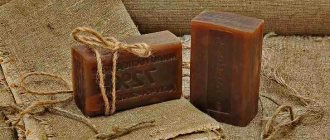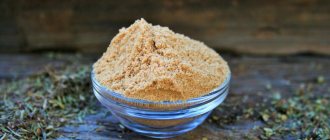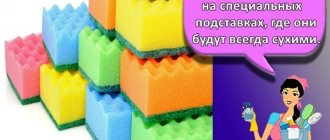Dish sponge manufacturing technology
At first glance, there is nothing simpler than making a sponge from foam rubber. But in fact, this is a long process with its own production stages.
Every kitchen must have a sponge for washing dishes.
- They use a special machine; a roll of fiber is put on it, tucked into the unwinders.
- A special hot melt adhesive is applied perpendicular to the movement of the fiber.
- The above type is sent with elastic polyurethane foam.
- Next is feeding to the roller press. The process is completed by cutting off part of the fiber with the joining strip.
- After the press with rollers, sheets of foam rubber and fiber fall under the next press – a pneumatic one.
- Everything is completed with polymerization. The duration of the process is 24 hours.
Sponges for washing dishes have become one of the main things in the kitchen.
The quality of the resulting sponge depends on two components: glue and equipment, so that when moisture enters, the sponge does not delaminate.
The dangers of kitchen sponges
The porous material of dishwashing sponges (whether microfiber or foam rubber) is very convenient, holds foam perfectly, but at the same time poses a danger to the human body.
Already a week after use, sponges accumulate a huge amount of bacteria , and even such dangerous ones as staphylococcus, salmonella, which are then transferred to all contact surfaces (countertop, dishes, sink).
Employees of Rospotrebnadzor made a statement that more than 70% of the bacteria contained in the sponge cause acute infectious intestinal diseases. And American scientists discovered during tests that one sponge can contain hundreds of times more bacteria than the rim of a toilet bowl.
So sometimes intoxication, malaise, vomiting, upset stomach, diarrhea or abdominal pain can be a consequence of the usual use of kitchen sponges.
What is a dish sponge made of?
Sponge manufacturing plants offer a wide selection. They are made from:
- polyurethane foam or foam rubber;
- cellulose;
- environmental materials;
- microfiber (polyester fibers)
- bamboo
The material used to make the sponge affects its service life.
Each type has its own purpose, its own service life and its own conditions of storage and use.
Recommendations
Selecting and using washcloths for cleaning will be easier if you pay attention to the following tips from cleaning specialists:
- Sponges that have different uses should be stored separately from each other.
- A vinegar solution can be used to disinfect reusable sponges.
- Deformed, worn-out washcloths lose their functionality and require replacement.
Regardless of the material of the sponge, it is better to carry out cleaning with gloves. This requirement is especially important when using washcloths with abrasive surfaces, allergies, and the use of aggressive household chemicals.
What are the sizes and shapes of sponges?
The creators manage to produce different types of sponges: round, oval, rectangular. The most popular are washcloths with a rectangular shape. They are the most convenient to use. Ease of use depends on how the material fits in your hand.
If it is smaller than the size of your palm, it will be uncomfortable to use, but its cost will be significantly lower. If the sponge is larger than your palm, the process will be more pleasant and faster. And the cost increases in this case.
A sponge on a plastic handle is convenient for washing certain dishes.
Some manufacturers have created sponges on a plastic handle. Everyone will appreciate this device, especially for washing narrow and hard-to-reach objects: bottles, cups.
Types of sponges by material
The production includes a large number of different materials for washing dishes and kitchen surfaces. Each of the materials is good, but it is worth considering the features so as not to cause harm.
- Abrasive sponge. Hard or abrasive sponges do a good job of cleaning dirt that pure foam rubber cannot handle. They have one part foam rubber and the other abrasive. Or they are made entirely of hard material, an example of this is metal materials.
- Foam sponge. The most common use case. It has a big disadvantage in that it wears out quickly and tends to accumulate harmful bacteria. Therefore, do not be lazy and replace once a week.
- Plastic. This option is more gentle than a metal sponge. It is convenient for her to wash cups and mugs. The inconvenience is that if you apply cleaning gel to it, it can leak through the large holes that exist between the plastic fibers.
- Metal. The kind that is not suitable for washing all types of dishes. It is appropriate to use only on objects with thick metal walls. Application on Teflon coatings will damage them.
- Microfiber sponge. The basis for the production of such sponges is polyester fibers. They are characterized by: hygroscopicity and long service life. They handle dirt well and are washable.
A properly selected detergent and the type of dishwashing sponge you choose will speed up and make your work easier.
Each composition is designed for specific actions. An incorrectly chosen sponge will either not cope with its task or will seriously damage the coating.
Metal sponges Amway Dish Drops Scrub Buds series
Amway Dish Drops soft steel sponges cost 5-6 times more than regular metal sponges. But unlike the latter, they last about a year, do not rust after 2-3 weeks of use and do not leave scratches on surfaces. They are made of stainless steel threads - long, thin and surprisingly strong. Judging by the reviews, the sponges retain their original shape for a long time and do not fray.
Benefits of Amway Dish Drops metal sponges:
► Carefully clean any unpolished utensils that do not require gentle abrasive action. With their help, you can wash off carbon deposits and dried food residues from dishes made of glass, stainless steel, cast iron, and earthenware.
► Copes with heavy soiling: suitable for cleaning stoves, ovens and grills.
► Lasts 6-7 times longer than regular metal sponges.
► Easy to clean from pieces of food and carbon deposits, to remove which you just need to stretch the sponge like an accordion. Can be washed in the dishwasher.
► Soft, do not cling to your hands and do not scratch dishes.
Like Greenway, Amway is a network MLM company. The brand's products can be purchased in online stores (for example, on wildberries) and at Amway centers, or ordered through numerous representatives.
Read the blog: “Caution, chemicals: how household cleaning products affect your health.”
How to choose the right sponge for dishes
Each housewife chooses a sponge for herself. But it is worth considering that washcloths with hard materials are strictly contraindicated for Teflon and delicate coatings. This threatens to create small cracks and scratches that will soon fill with bacteria.
In the modern world, a huge number of different sponges are produced.
Materials that are too soft will not be able to cope with tough stains. It would be appropriate to choose either a combined type of sponge (an abrasive coating on one side and foam rubber on the other), or stock up on several types of sponges. A complete set of necessary rags, sponges and other things is much more convenient than trying to wash off the stuck fat on the cauldron using foam rubber.
Cellulose sponges have a pronounced antibacterial effect.
By the way, it is worth noting another variety such as bamboo sponges. Since an allergy is an unpleasant disease that can occur to almost anything. Allergy sufferers need to select all items that cannot cause them discomfort. In addition, bamboo sponges can be safely used to clean children's dishes.
Plastic washcloths Practi Paclan
Chinese Practi Paclan washcloths are useful for working with surfaces for which contact with iron sponges is strictly contraindicated. With their help, you can carefully clean capricious Teflon frying pans, polished stainless steel sinks and acrylic shower trays.
The manufacturer does not promise miracles: it will not be possible to remove the hardened deposits of many months with a plastic washcloth. They are designed to remove light or pre-softened dirt.
What are the advantages of Practi Paclan plastic washcloths?:
► Delicate cleaning – soft polymer threads do not scratch surfaces sensitive to abrasives
► Durability – one package (3 pcs.) will last for at least six months.
► Soft, do not prick the skin.
What is a special sponge
The sponge, which is intended for special types of actions, is professional. There are several varieties:
- Metal
- Melamine
- For delicate surfaces
Metal sponges are used to clean difficult stains.
It is not recommended to use a metal sponge on enamel cookware. The coating will be damaged. This material is perfect for cleaning metal surfaces: roasting pans, ovens, cauldrons, and so on. Advantages of the material: long service life and sterility. Cleaning the sponge is done with hot boiling water, which will kill all bacteria on it.
When choosing a sponge, check the quality of the material.
Dishwashing gels and powders have a chemical composition. Caring housewives try to choose safe health products or minimize their use. In addition, it will not be superfluous to resort to additional rinsing.
A significant role when choosing a sponge for washing dishes is played by size, as well as shape.
Cleaning without the use of gels and dishwashing powders involves using a melamine sponge. The material is based on melamine resin. When interacting with water, a sufficient amount of foam is formed, which removes fat.
Note! This type of sponge cannot be used to wash dishes, only the outside of pots.
The least germs are retained on a foam sponge.
Hard objects wrapped in soft plastic or synthetic fabric can handle delicate surfaces. The service life of such sponges will not be long, but they will adequately cope with their main task - not to leave scratches.
Content
- How are dish sponges made?
- Types of products
- Classification by material
- Sizes, shapes
- How to determine quality
- How to store and use
- Rules of care
- How to make a laundry sponge yourself instead of using a store-bought sponge to wash dirty dishes
- Manufacturers and prices
- Tips and tricks
There are many types of household sponges that are designed to clean a particular surface.
How to store a sponge
Washing, boiling, soaking in bleach or vinegar are unnecessary actions in the case of sponges. It is recommended to replace them at least once every 7 days if the sponge composition is foam rubber.
Today there are many devices for storing sponges.
Ecological materials do not actively accumulate bacteria. Replacement is carried out every 30-60 days. In order not to throw away harmless material, it can be buried in the ground. Jute sponges are doused with boiling water once every 7 days. If they lose their aesthetic appearance or stretch, soak them in a soda solution.
Sponges need to be washed systematically.
You can get a lot of benefits from just one jute washcloth. When it no longer serves as a material for washing, bury it in a pot with a plant. It can also serve as drainage. Dishwashing materials will spoil the aesthetics of the room if they are placed in the most visible place. In addition, sponges left on the sink lose their appearance over time and may acquire an unpleasant odor.
Sponges should be stored in a perfectly ventilated place.
If you have the opportunity to store it in a cabinet under the sink, store it there. It is important to remember that it should go into the cabinet slightly damp; for this, it must first be squeezed out. An empty sink is beautiful. If the look of an empty object is not to your liking or it is not practical to take out a sponge, there is no cabinet. Then, it’s worth going shopping for kitchen accessories.
There you can find different devices for storing sponges:
- A beautiful stand for washing accessories. As long as it fits into the interior. Don't forget to wash it periodically.
- Hanging organizers or dryers for cabinets. Can hang on doors. You can find them in the form of cups, where it will be convenient to put sponges and other cleaning supplies.
- Hanging organizers. The lightweight material from which they are made is placed on the tap, and all items can easily be placed in the pocket. Similar details can be placed above the sink. Often has small holes for water to drain.
- Stationary items. They can easily accommodate not only the detergent, but also its accessories.
- Containers with suction cups. They can be secured inside the sink and filled with necessary items. Even though the sink is not the driest surface, the suction cups hold up well.
- Stands that can be attached near the tap. The item remains visible, but excess liquid will drain directly into the sink.
Rags with a specific holder allow you to quickly remove liquid from the washcloth.
A selection of products for every taste and interior. The main thing remains one thing: ensuring that sponges and rags are stored so that they can dry in them and be ventilated.
How to make a sponge with your own hands
There is nothing easier than making a sponge yourself. It consists of foam rubber, therefore, this material should be used. Since there is currently a big environmental problem, and an item made of foam rubber will take about 200 years to decompose, alternative options can be considered.
You can make your own sponge.
Among the alternative creation methods are washcloths:
- From jute;
- From a mesh for vegetables;
- From tulle
These are the main options for needlework. All of them are incredibly low cost. To knit with jute you need: jute, a hook and scissors. It can be done easily if you remember your craft lessons from school with the theme of crochet. We perform: 5 air loops, loop. We continue to knit in a circle, do not forget about double crochets, add air loops.
If you make a sponge yourself, then consider the place where it will be stored.
There is no need to tighten it tightly; you can and should even leave gaps. This technique will allow you to get a sponge that will dry quickly. Goal: a circle larger than the palm of your hand. You can add your own patterns if desired. In water, the washcloth will shrink. Don't forget to attach a loop on which you will store the washcloth at the sink. Caring for this type of sponge involves disinfecting it once every 7 days with boiling water. Additional options for use at the end of its service life can be found in the article above.
You can't make a silicone sponge yourself.
After you have bought the potatoes, you don’t have to throw away the net. Cut off the top and leave the sides alone. Fold the mesh in 4 layers. And crochet around the perimeter of the resulting square to secure the layers of the mesh and give it a beautiful decoration. Tulle appears on the bride, but not in the process of washing dishes.
Sponges made from different materials are suitable for different dishes.
If you have this fabric left over, fold it into a long rectangle. Cut small strips along the entire rectangle. All the strips made must be connected to each other. Just tie with your hands. Arm yourself with a crochet hook and knit a round pattern from the created strips. Use the knitting principle as when working with jute.
Tips for use
To protect yourself and your household from bacteria and the infectious diseases they cause, you should listen to simple but very effective advice:
Wash dishes immediately after eating to reduce the risk of bacteria growing and growing.- For foam sponges, use each side depending on how dirty the dishes are.
Which side should I wash? If these are plates for which you will only need detergent and hot water, then use the soft side.Pans, pots, and burnt dishes should be cleaned with the hard side.
- After using detergents, be sure to rinse the dishes with hot water and then wipe dry with a towel.
- Do not forget to regularly clean the sink and the sink around it, but it is advisable to have a separate sponge for this.
- At the end of the day, for disinfection purposes, you can hold the sponge in a saline solution for 15-20 minutes, then rinse thoroughly with hot water.
- After the end of their service life, eco-activists recommend burning or burying sponges made from natural materials in the ground (thanks to their rapid decomposition, they will even bring some benefit to the soil).
What to wash dishes with instead of a sponge
You can replace foam rubber with any of the above proposed homemade options. Ordering or making your own jute washcloth will please you with the quality of washing away dirt from plates.
Different types of dishes require special care.
After changing foam rubber to this type of material, you will be surprised that detergents do not foam as much as they do on sponges. In addition, hardware stores have a large selection of washcloths. They cope with the task no worse than foam rubber, and they dry better.
If you notice that the washcloth begins to crumble or change color, throw it away immediately.
There is no universal option. It would be nice for one sponge to cope with a large number of different stains, not foam too much, be environmentally friendly and not require a large amount of detergent. When purchasing sponges, pay attention to their storage conditions and service life. By adhering to these simple rules, you take care of your health and the health of your household.











